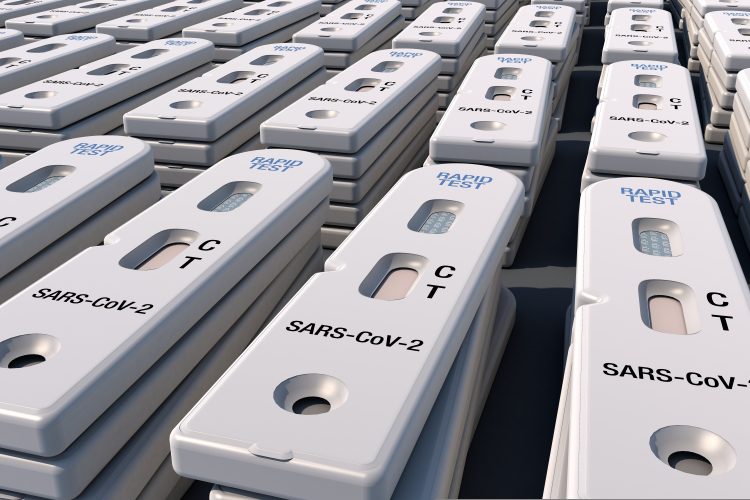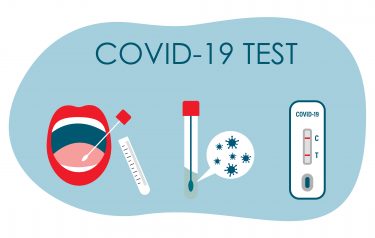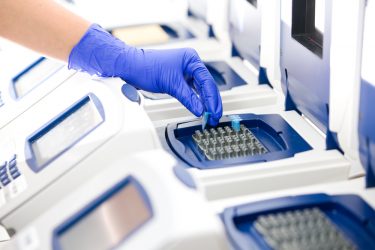Which is the best in vitro diagnostic test method?
Posted: 6 May 2021 | Liz Thorn (Team Consulting) | No comments yet
In this article, Liz Thorn, Senior Consultant, Diagnostics at Team Consulting, explores the various in vitro diagnostics (IVDs) techniques available and where they are best applied in the context of influenza and COVID-19.


There has been a lot of discussion about in vitro diagnostics (IVDs) by journalists over the last 12 months, with the relative merits of different types of tests being evaluated in the hope that the best method can be identified. In the 21st Century we have come to expect that technology enables perfection, therefore we anticipate a binary answer, with things being either right or wrong, or good or bad. The truth for IVD test methods, as it is with most things in life, is a bit more complicated.
Rather than asking which is the best IVD test method, the question we should pose is which is the best IVD test method for a specific situation. Each test method has different equipment requirements and provides different information; therefore, when trying to establish which is best, you need to think about the situation you are testing in and what information you are hoping to derive.
Obviously, most of the focus at the moment is on SARS-CoV-2 / COVID-19, but we will look at another example, influenza, which is more established and analogous to COVID-19. There are multiple techniques used to detect flu infection, from lateral flow tests, to Polymerase Chain Reaction (PCR) and genetic sequencing, all of which have also been used to detect COVID-19 over the past year.
Lateral flow
‘Lateral flow’ is the format of lots of tests. Some are designed to detect the virus itself (antigen tests) and others to detect antibodies to the virus.
In the case of influenza, the lateral flow tests detect the virus and generally differentiate between the two major types of human influenza, A and B.


The information supplied will rule in or rule out a flu infection and determines if you have influenza A or B (the latter often considered to cause more serious infections). The result of a lateral flow test may allow a physician, in some circumstances, to prescribe an anti-viral treatment such as zanamivir (Relenza) or perhaps more commonly oseltamivir (Tamiflu).
Lateral flow tests are easy to use, can be carried out in non-lab settings and take only 10-20 minutes to generate a result. In addition, they have a low cost, relative to the other test methods.
There are limitations, however. Lateral flow antigen tests are less sensitive than PCR and there is a risk of obtaining false negative results if there is insufficient virus to be detectable by this less sensitive test method. The sensitivity limitation has been a frequent topic of discussion in the popular press, but not always balanced with the benefits. A positive result is unlikely to be incorrect. Lateral flow tests do not require highly skilled laboratory personnel or equipment to be carried out and can therefore be deployed in lots of different settings and at significant scale. In the context of COVID-19, this means that testing can be carried out in workplaces and schools, resulting in the detection of asymptomatic cases which can help stop the spread of infection.
PCR
PCR assays, or other nucleic acid test assays, can be designed to provide more information about the virus being detected, compared to a lateral flow test. The exact strain of the virus can be targeted, as well as markers for resistance to the commonly prescribed anti-viral treatments. Some nucleic acid tests can also be multiplexed, ie, they can be designed to detect other respiratory infections at the same time. The majority of these tests are carried out in laboratories and require skilled lab staff, specialised equipment and some time to run. While PCR tests do not provide immediate results, they can provide comprehensive information about the infection, such as the strain (eg, H1N1, a strain of influenza with pandemic potential) and the suitability of certain treatments.


The high sensitivity (low false negative rate) and specificity (low false positive rate) of PCR tests means that the results they provide can be accepted with confidence. As such, PCR is a powerful tool.
PCR is so sensitive that it can detect extremely low levels of virus, which reduces the likelihood of false negatives. However, though a positive result indicates the presence of the viral genetic material (nucleic acid), it does not indicate whether the virus is still viable (alive) and capable of causing an infection. Inevitably, there are therefore limitations to PCR. The tests are designed to target a short sequence of nucleic acid and, as the virus mutates over time, the target sequence may no longer detect the circulating variant of the virus. As such, new PCR assays may need to be developed over time as the virus mutates into new strains.
Genetic sequencing
Genetic sequencing… will be an essential tool in determining whether the current vaccines need to be adjusted to maintain efficacy”
Genetic sequencing by traditional methods looks at all of the virus’ genetic material and can therefore identify any variations that can lead to new strains. The World Health Organization (WHO) has a network of laboratories that sequence samples around the world as part of a flu surveillance programme. The information derived from this sequencing testing is used to inform the composition of the influenza vaccine each year. Sequencing really is the holy grail in terms of understanding the particular virus; however, it is also a highly skilled and costly process – and thus only available in a limited number of laboratories.
In the years ahead sequencing will become increasingly important for tracking SARS-CoV-2. Genetic sequencing has already been invaluable in detecting more virulent variants and it will be an essential tool in determining whether the current vaccines need to be adjusted to maintain efficacy against the circulating strains.
Conclusion
As the SARS-Cov-2 pandemic has unfolded over the last year, the methods for the detection and diagnosis of COVID-19 have followed the same pattern as has been used for influenza for decades. However, due to the size of the pandemic, the volume of tests being carried out for SARS-CoV-2 is exponentially greater than for influenza, reaching a scale that has never been seen before.
So, in terms of which is the best test, the answer is that it depends on where the test is being carried out and what information is required.
In terms of which is the best IVD test method for a specific situation, the following are arguably the best:
- For low cost and non-lab settings in high volumes: lateral flow tests
- For result accuracy: PCR
- For detecting different variants of the virus: genetic sequencing
The current pandemic has clearly demonstrated just how valuable IVD testing is and each of these methods will continue to have an important role to play in helping to deal with this emergency.
About the author
Liz Thorn is Senior Consultant, Diagnostics at Team Consulting. She has more than 20 years of experience working in a variety of diagnostics/medical devices companies from start-ups to GE Healthcare. She has managed projects ranging from large multi-partner programmes to small assay developments. Liz is a graduate microbiologist and professional project manager.
Related topics
Analytical techniques, Antibodies, Genomics, Medical Devices, Microbial Detection, Microbiology, PCR assay, Technology, Viruses









